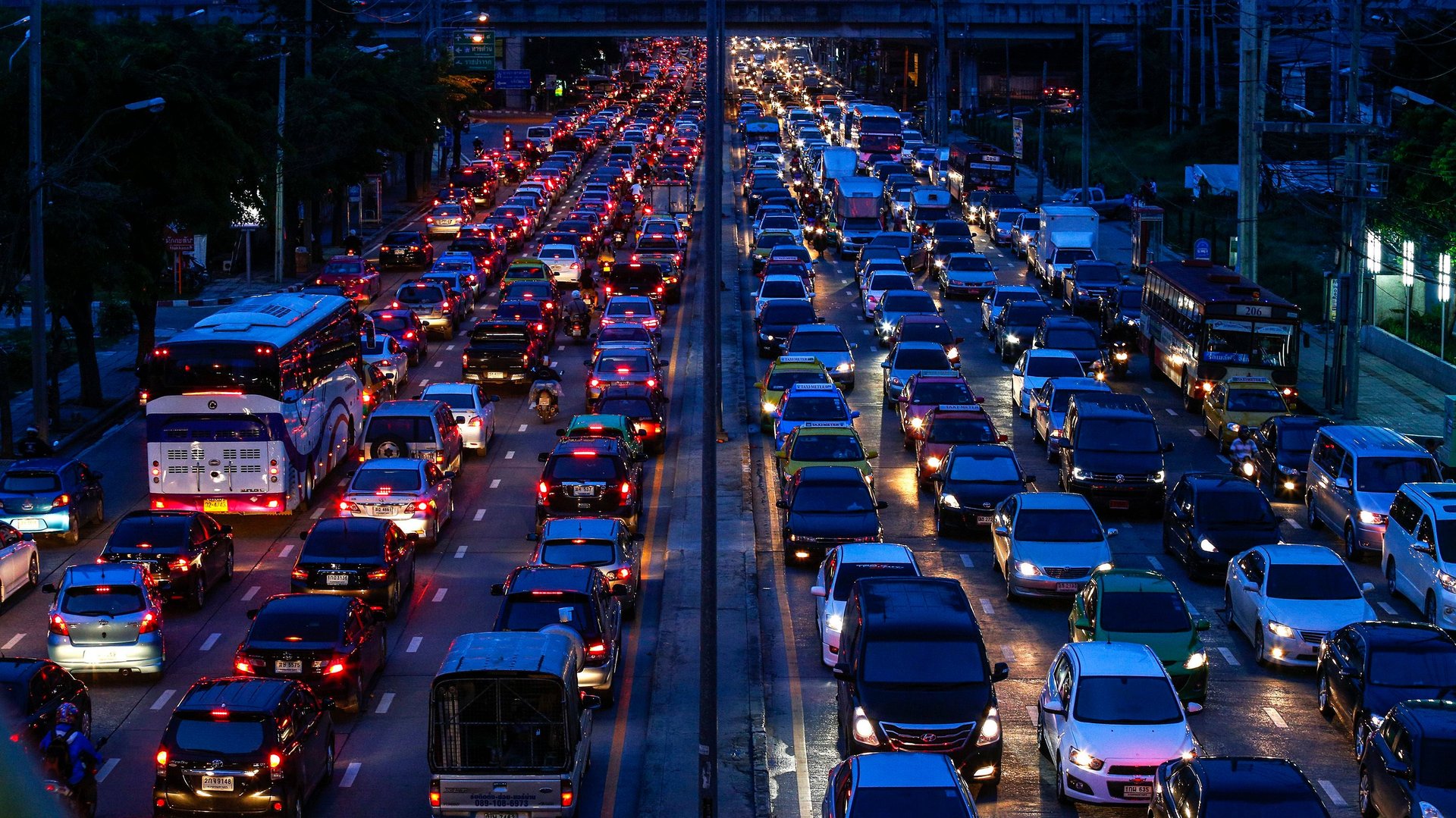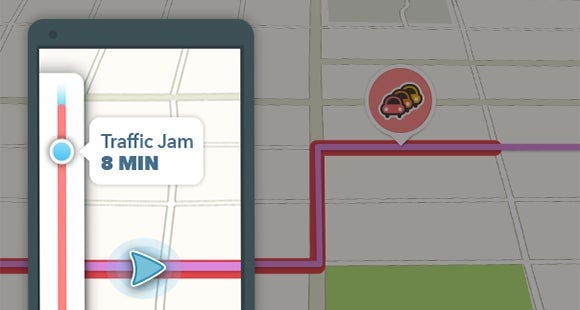Google’s Waze now calculates your wait time in traffic
The Google-owned navigation app Waze just got an upgrade. The app, which leverages crowdsourced traffic information from its users to provide a layer of data showing things like construction slowdowns, police sightings, and nearby gas stations, will now add traffic wait time to that list.


The Google-owned navigation app Waze just got an upgrade. The app, which leverages crowdsourced traffic information from its users to provide a layer of data showing things like construction slowdowns, police sightings, and nearby gas stations, will now add traffic wait time to that list.

If the wait times are accurate, it’s an obviously useful feature. Though Waze and Google Maps (since Google’s purchase of Waze in 2013) have displayed areas of heavy traffic for several years, being able to pinpoint the amount of time you can expect to spend in a traffic jam is much more helpful than merely knowing it exists.
Don’t be surprised if the feature soon turns up in Google Maps, too. The main point of Google’s purchase of Waze was to allow its flagship Maps app to take advantage of all the data gleaned from Waze users.
So, then, why even continue to have both apps? While Maps and Waze both are navigation tools, they are fundamentally different from one another.
Waze is not just a mapping app—it’s a crowdsourcing platform that relies on user engagement and reporting to acquire good data. Google Maps, meanwhile, is meant for more barebones use: get directions from point A to point B, no questions asked. The majority of Maps users probably have little interest in the social and crowdsourcing features of Waze—they just want the data. Maintaining both apps allows Google to give both types of users what they want.